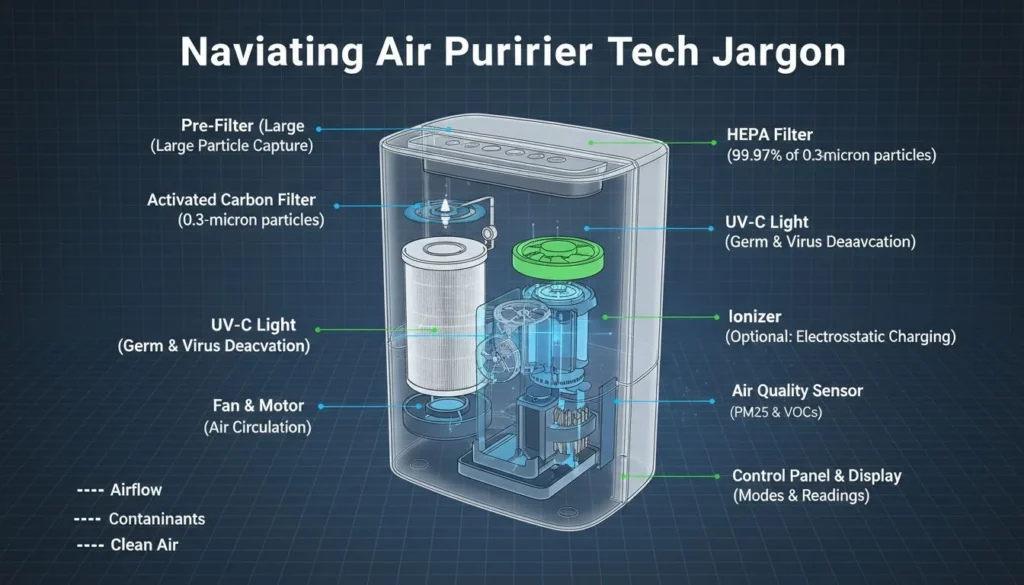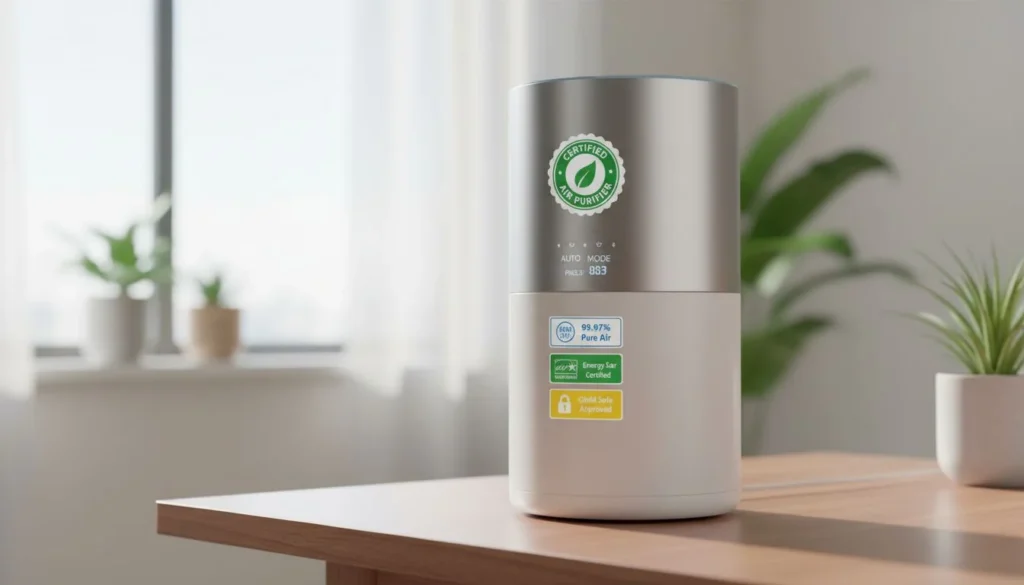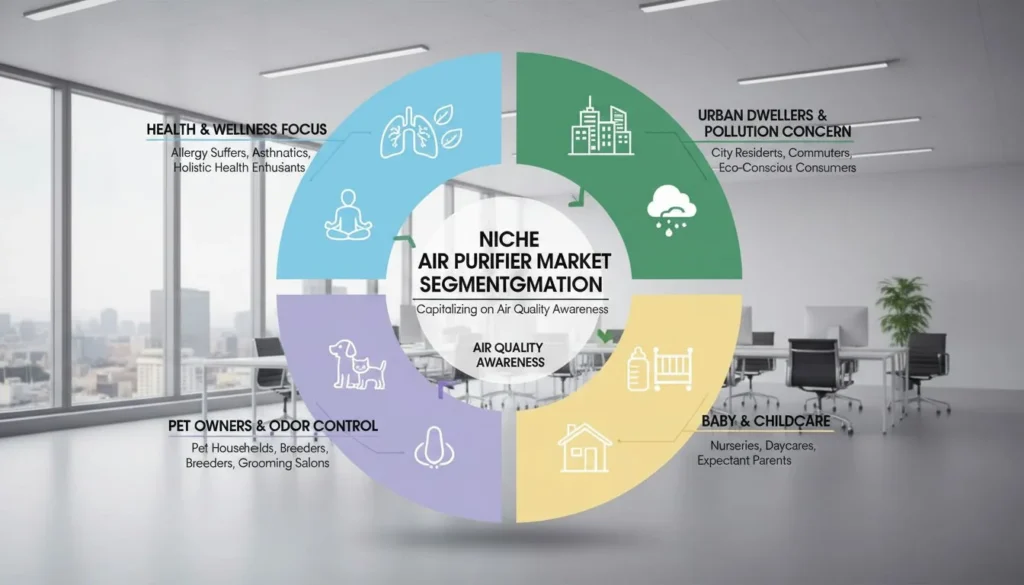The world today faces two escalating crises that, at first glance, seem unrelated: the alarming rise in obesity rates and the pervasive issue of worsening air quality. Both are global health challenges, impacting millions and straining healthcare systems worldwide. While the causes of obesity are often attributed to diet, lifestyle, and genetics, a growing body of scientific evidence suggests a surprising, yet significant, environmental contributor: air pollution. This article will delve into the emerging concept of air pollution as a potential "obesogen" – an environmental chemical that promotes obesity – and explore the intricate biological mechanisms through which it contributes to weight gain and metabolic disease. We will break down the scientific evidence, explain the biological pathways from inhalation to metabolic disruption, and discuss the profound implications for public health, ultimately advocating for clean air as a fundamental pillar of metabolic health.
The Epidemiological Evidence: Connecting the Dots
The link between air pollution and adverse health outcomes has been well-established for decades, primarily focusing on respiratory and cardiovascular diseases. However, a compelling and increasingly robust body of epidemiological evidence now connects air pollution not just to simple weight gain, but to a broader spectrum of metabolic dysfunctions, collectively known as Metabolic Syndrome (MetS). MetS is a cluster of conditions—increased blood pressure, high blood sugar, excess body fat around the waist, and abnormal cholesterol or triglyceride levels—that occur together, increasing your risk of heart disease, stroke, and type 2 diabetes.
Numerous large-scale population studies and meta-analyses have consistently demonstrated a correlation between exposure to various air pollutants and an increased risk of obesity and MetS. Key pollutants implicated in these studies include fine particulate matter (PM2.5), nitrogen dioxide (NO2), and ozone (O3). PM2.5, in particular, is a major concern due to its ability to penetrate deep into the lungs and even enter the bloodstream, allowing it to exert systemic effects throughout the body.
For instance, a systematic review and meta-analysis published in Environmental Health Perspectives found a significant association between long-term exposure to PM2.5 and an increased risk of obesity and type 2 diabetes. Another impactful statistic highlights the dose-response relationship: studies show that for every 10 µg/m³ increase in long-term PM2.5 exposure, there is an associated increase in Body Mass Index (BMI) and waist circumference 1. This seemingly small increase in pollutant concentration can have a substantial impact on population-level health outcomes, underscoring the widespread nature of this environmental threat.
Beyond PM2.5, research has also pointed to NO2 and O3 as contributors to metabolic dysfunction. NO2, primarily from vehicle emissions, has been linked to insulin resistance and increased risk of diabetes, while O3, a component of smog, has been shown to induce inflammation and oxidative stress, both of which are precursors to metabolic disorders 23. The consistency of these findings across diverse populations and geographical regions strengthens the argument for a causal link, moving beyond mere correlation to suggest that air pollution is an active participant in the global obesity epidemic.

The "How": Biological Pathways from Inhalation to Weight Gain
The epidemiological evidence provides a compelling case for the link between air pollution and metabolic disease, but understanding the biological mechanisms at play is crucial for appreciating the true extent of this connection. The journey from inhaling polluted air to gaining weight involves a complex interplay of physiological processes, primarily driven by systemic inflammation, endocrine disruption, and alterations to the gut microbiome.
Systemic Inflammation and Oxidative Stress
When we inhale pollutants like PM2.5, our bodies mount an immune response, just as they would to a virus or bacteria. This triggers a state of chronic, low-grade inflammation that extends far beyond the lungs. This systemic inflammation is a key driver of metabolic dysfunction. Inflammatory signals can interfere with the normal functioning of various tissues, including adipose (fat) tissue. In a healthy state, adipose tissue plays a vital role in regulating energy balance and insulin sensitivity. However, under the influence of pollution-induced inflammation, it becomes dysfunctional, leading to insulin resistance – a condition where cells fail to respond effectively to insulin, resulting in higher blood sugar levels and an increased risk of type 2 diabetes. Furthermore, the inflammatory process generates oxidative stress, an imbalance between free radicals and antioxidants in the body, which further damages cells and contributes to the progression of metabolic disease.
Endocrine Disruption
Many air pollutants act as endocrine-disrupting chemicals (EDCs), or "obesogens," which interfere with the body's hormonal systems that regulate metabolism and appetite. These pollutants can mimic or block the action of natural hormones, leading to a cascade of metabolic disturbances. For example, exposure to air pollution has been shown to increase levels of cortisol, the body's primary stress hormone. Chronically elevated cortisol is strongly linked to the accumulation of visceral fat, the dangerous type of fat that surrounds the abdominal organs and is a major risk factor for metabolic syndrome.
Moreover, air pollutants can disrupt the delicate balance of appetite-regulating hormones. Leptin, the "satiety hormone," signals to the brain that we are full and can stop eating. Studies have shown that air pollution can interfere with leptin signaling, leading to a state of leptin resistance. In this state, the brain doesn't receive the satiety signal, leading to persistent feelings of hunger and increased food intake, ultimately contributing to weight gain.
Gut Microbiome Dysbiosis
While we typically think of air pollution as something we inhale, a significant portion of pollutants can be swallowed and enter the gastrointestinal tract. This can have a profound impact on the gut microbiome, the complex community of microorganisms that reside in our intestines and play a crucial role in digestion, immunity, and metabolism. Exposure to pollutants can lead to gut microbiome dysbiosis, an imbalance in the composition and function of these microbial communities. This dysbiosis can result in a "leaky gut," a condition where the intestinal lining becomes more permeable, allowing harmful substances to pass into the bloodstream and trigger inflammation. Furthermore, an altered gut microbiome can affect how we metabolize food, leading to increased energy extraction from the diet and a greater propensity for fat storage, both of which contribute to obesity and metabolic disease.
Context is Key: Who is Most at Risk?
While air pollution poses a general threat to metabolic health, certain individuals and life stages are particularly vulnerable to its obesogenic effects. Understanding these windows of vulnerability and individual susceptibilities is crucial for targeted public health interventions.
Windows of Vulnerability
The timing of exposure to air pollution matters significantly. Research has increasingly highlighted the critical importance of prenatal exposure. Exposure to air pollution during pregnancy can have profound and lasting effects on the developing fetus, potentially "programming" a child for a higher risk of obesity and metabolic disease later in life. This early-life exposure can disrupt metabolic pathways, alter gene expression, and influence the development of fat tissue, setting the stage for future health problems. Studies have shown that children born to mothers exposed to higher levels of air pollution during pregnancy have a greater likelihood of being overweight or obese in childhood and adolescence 4.
Individual Susceptibility
Beyond prenatal exposure, various individual factors can influence susceptibility to the metabolic effects of air pollution. Age is a significant factor, with both very young children and older adults often being more vulnerable due to their developing or aging physiological systems. Sex can also play a role, with some studies suggesting differences in metabolic responses to air pollution between males and females, possibly due to hormonal variations. Furthermore, individuals with pre-existing conditions, such as obesity itself, diabetes, or cardiovascular disease, may be more susceptible to the adverse metabolic effects of air pollution. Their already compromised metabolic systems may be less able to cope with the additional stress imposed by pollutants, leading to a more rapid progression or worsening of their conditions.
Lifestyle Interactions
It is also important to consider how lifestyle factors interact with air pollution exposure. While air pollution can contribute to weight gain and metabolic dysfunction, a healthy diet and regular physical activity can help mitigate some of these negative effects. A diet rich in antioxidants and anti-inflammatory compounds can help counteract the oxidative stress and inflammation induced by pollutants. Regular exercise can improve insulin sensitivity and metabolic health, potentially offering a degree of protection against the obesogenic effects of air pollution. However, it is crucial to emphasize that these lifestyle interventions are not a substitute for clean air; rather, they can complement efforts to reduce exposure and improve overall health outcomes.

Solutions: Breathing Easier, Living Healthier
Given the profound impact of air pollution on metabolic health, what steps can be taken to mitigate this unseen threat? Addressing air pollution requires a multi-faceted approach, encompassing both broad policy changes and individual actions. On a societal level, this involves transitioning to cleaner energy sources, promoting sustainable transportation, and implementing stricter industrial emission controls. However, while these large-scale changes are crucial, individuals can also take proactive measures to protect themselves and their families, particularly by improving indoor air quality.
Indoor air can often be more polluted than outdoor air, as pollutants from outside infiltrate our homes and offices, combining with indoor sources like cooking fumes, cleaning products, and building materials. This is where high-quality air purification systems become invaluable. Air purifiers, especially those equipped with advanced filtration technologies like HEPA and activated carbon filters, can effectively capture a wide range of airborne pollutants, including the fine particulate matter (PM2.5) that is so strongly linked to metabolic dysfunction.
For personal spaces, أجهزة تنقية الهواء المكتبية offer a compact yet powerful solution. Products like the HisoAir Desktop Air Purifier are designed to fit seamlessly into your personal environment – be it your desk, nightstand, or shelf – providing clean air where you need it most. These devices are engineered for whisper-quiet operation, ensuring they don't disrupt your focus, sleep, or comfort. With high-efficiency CADR (Clean Air Delivery Rate) performance, they can refresh the air in a typical room multiple times an hour, significantly reducing the concentration of harmful pollutants. Furthermore, advanced desktop purifiers often come with smart environmental sensing capabilities (PM2.5, CO₂, TVOC, temperature, humidity, noise, light, radar), allowing them to monitor your indoor air quality in real-time and auto-adjust their operation for optimal performance. Their compact size and stylish design make them a practical and aesthetic addition to any modern living or working space.
For larger areas or commercial settings, أجهزة تنقية الهواء المثبتة على الحائط provide a sophisticated, space-saving alternative. The HisoAir Wall-Mounted Air Purifiers, for instance, are designed to be ultra-slim and mount elegantly on any wall, taking up zero floor space. This makes them ideal for environments where floor space is at a premium or where traditional purifiers might pose a safety hazard, such as hotels, offices, healthcare facilities, and modern homes. They deliver consistently clean air without compromising style or safety, offering a discreet yet powerful solution for maintaining superior indoor air quality across broader areas. By actively removing pollutants from the air, these purifiers help to reduce the body's exposure to obesogens and inflammatory triggers, thereby supporting overall metabolic health.
Investing in an effective air purification system is a tangible step towards creating a healthier indoor environment, reducing your exposure to environmental obesogens, and ultimately supporting your metabolic well-being. It's a proactive measure that complements broader efforts to achieve cleaner air for all.

Conclusion: Clean Air as a Pillar of Metabolic Health
The intricate connection between air pollution and weight gain, extending to the broader spectrum of metabolic disease, is no longer a fringe theory but a growing body of scientific evidence. From large-scale epidemiological studies demonstrating consistent correlations to detailed investigations into the biological pathways of systemic inflammation, endocrine disruption, and gut microbiome dysbiosis, the picture is clear: the air we breathe plays a significant, often overlooked, role in our metabolic health.
This understanding necessitates a paradigm shift in how we approach public health. Clean air must be recognized not merely as an environmental concern, but as a crucial component of any comprehensive strategy to combat the global obesity epidemic. Just as we advocate for healthy diets and regular exercise, we must equally champion policies and technologies that reduce air pollution.
The implications are profound. Reducing air pollution is a vital, actionable step toward protecting the metabolic health of current and future generations. It is an investment in a healthier population, potentially alleviating the burden of chronic diseases like type 2 diabetes, heart disease, and obesity-related complications. As individuals, while advocating for broader policy changes, we can also take steps to improve the air quality within our immediate environments, particularly indoors where we spend a significant portion of our time. This includes using high-quality air purifiers, ensuring proper ventilation, and being mindful of indoor pollutant sources. Ultimately, the fight for clean air is a fight for metabolic health, a fundamental right that underpins a thriving and healthy society.
References:







